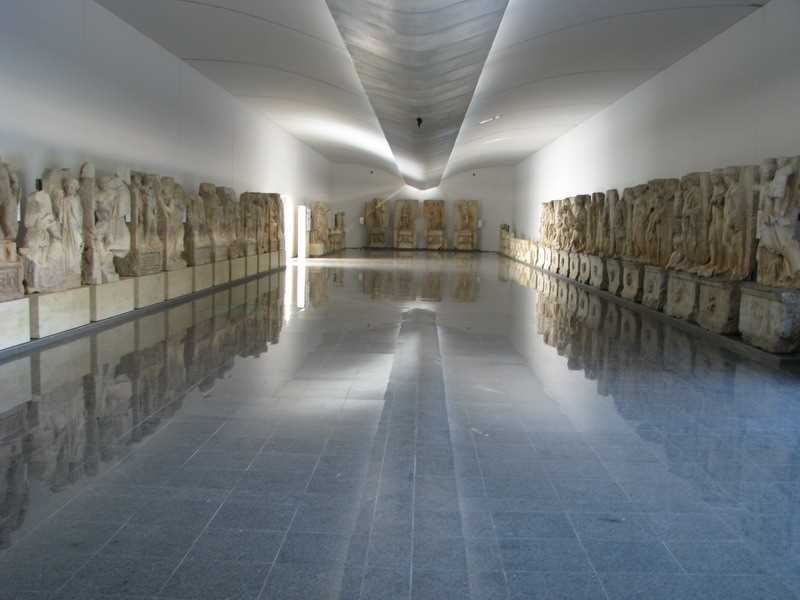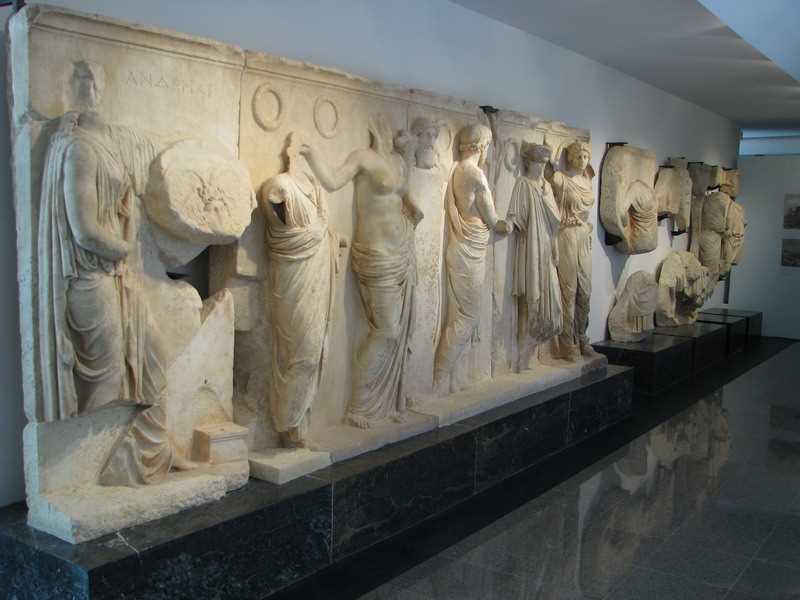The Aphrodisias Museum is located within the ancient city of Aphrodisias, in the Karacasu district of Aydın province, western Türkiye. In antiquity, this city was situated in the Caria region and was one of the most important cultural and artistic centers of the Roman period. The museum lies adjacent to the Temple of Aphrodite and other structures in the archaeological site. Officially opened in 1979, the museum houses one of Türkiye’s unique archaeological collections.
History of the Museum
Systematic excavations began in 1961 under Prof. Dr. Kenan Erim, revealing much of the city's cultural heritage. The museum was established to preserve and display these findings and officially opened in 1979. Its architecture reflects the aesthetic principles of the ancient city.
Collection and Display
The collection largely consists of sculptures, architectural fragments, sarcophagi, inscriptions, and small finds from Aphrodisias excavations. The display layout presents the city’s cultural and religious life chronologically and thematically.

Afrodisias Müzesi ( Kültür Portalı )
Sculptural Works
Aphrodisias was famous for its sculpture school. The museum especially stands out with its Roman Imperial period marble statues, including depictions of Aphrodite, imperial portraits, and mythological scenes. Notable pieces include statues of Aphrodite, Sebasteion reliefs, and busts of imperial family members.

Afrodisias Müzesi ( Kültür Portalı )
Inscriptions and Architectural Elements
The museum houses many Greek and Latin inscriptions, providing insights into Aphrodisias’ social structure, religious beliefs, and civic life. Architectural pieces such as column capitals, friezes, and mosaics document the city’s rich architecture.
- Sebasteion Hall: This hall displays reliefs from the Sebasteion sanctuary, which depict emperors with gods and goddesses—examples of political and religious propaganda of the era.
- Remains from the Temple of Aphrodite: Courtyards inside and outside the museum contain architectural fragments, cult statues, and other finds related to the Temple of Aphrodite.
- Architecture of the Museum: The museum features indoor halls and open-air displays. Its design references the marble craftsmanship and geometric order of the ancient city, with lighting and layout enhancing the aesthetic impact of the sculptures.
- Excavation and Research Hub: The museum is also a center for excavation and research, working in cooperation with New York University and the Ministry of Culture and Tourism.
Conservation and Visiting
The museum preserves both the site and its collection, open year-round. Visitors can explore the museum in connection with touring the ancient city.


